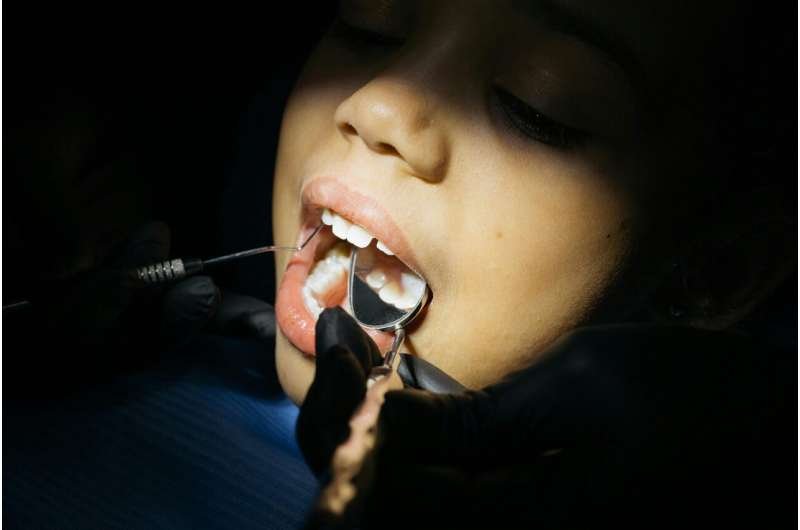
Fluoride has been added to public water systems in the United States since 1945 to strengthen tooth enamel and fight off bacteria, ultimately reducing tooth decay. Mass General Brigham researchers developed a model to estimate dental health outcomes for children if the United States were to ban fluoridation of public water. The new study, published in JAMA Health Forum, found that banning fluoride would substantially increase dental decay and costs particularly for publicly insured and uninsured children.
“Fluoride replaces weaker ions within tooth enamel, making it stronger and less susceptible to tooth decay caused by bacteria,” said senior author Lisa Simon MD, DMD, Division of General Internal Medicine at Brigham and Women’s Hospital.
“There’s strong evidence from other countries and cities, such as Calgary in Canada, showing that when fluoride is eliminated, dental disease increases. Our study offers a window into what would happen in the United States if water fluoridation ceased.”
Simon and the research team focused on children for the study, because fluoride strengthens teeth during development, and more robust data links fluoridated water to oral health in this age group.
The study used detailed oral health and water fluoridation data collected from 8,484 children (ages 0–19, 49% girls) in the nationally representative National Health and Nutrition Examination Survey (NHANES). Using this dataset, the researchers developed a microsimulation model to see how banning fluoride from drinking water would impact oral health, quality of life and dental care costs.
The researchers simulated two scenarios over 5- and 10-year periods, which align with policy planning horizons. First, maintaining current fluoride levels, and second, eliminating the addition of fluoride to public water.
“Using a simulation model to track the progression of diseases in current populations, we estimated the impact of removing fluoride on the risk of tooth decay and the related dental care costs, including treatment for decay and complications from delayed treatment.
“We ran the simulation 1,000 times to see how different factors could affect the results. This approach helps ensure that our predictions are more reliable and reflective of real-world variability,” said first author Sung Eun Choi, Ph.D., assistant professor of Oral Health Policy & Epidemiology at Harvard School of Dental Medicine.
The researchers found that eliminating fluoride increased the total number of decayed teeth by 7.5 percentage points, or 25.4 million more teeth with tooth decay over five years (equivalent to a tooth for one out of every three American children). The number of fluorosis cases—a discoloring of tooth enamel due to excessive fluoride intake—decreased by 0.2 million. They also estimated a cost of $9.8 billion in additional dental care costs over five years, which rose to $19.4 billion after 10 years.
“Most of the increased cost could be attributed to publicly insured children, meaning it would be a direct public health cost,” said Simon.
The study did not model cognitive effects from fluoride exposure as current levels of fluoride in public water are not associated with worse neurobehavioral outcomes. The researchers note that their model demonstrates meaningful, ongoing benefit from fluoride at safe levels currently recommended by the Environmental Protection Agency, the National Toxicity Program, and the Centers for Disease Control and Prevention.
“We know fluoride works. We’re able to show just how much it works for most communities and how much people stand to lose if we get rid of it,” said Simon.
More information:
Sung Eun Choi et al, Projected Outcomes of Removing Fluoride From US Public Water Systems, JAMA Health Forum (2025). DOI: 10.1001/jamahealthforum.2025.1166
Mass General Brigham
Citation:
National fluoride ban would substantially increase children’s tooth decay and dental costs, modeling study finds (2025, May 30)
retrieved 30 May 2025
from https://medicalxpress.com/news/2025-05-national-fluoride-substantially-children-tooth.html
This document is subject to copyright. Apart from any fair dealing for the purpose of private study or research, no
part may be reproduced without the written permission. The content is provided for information purposes only.

